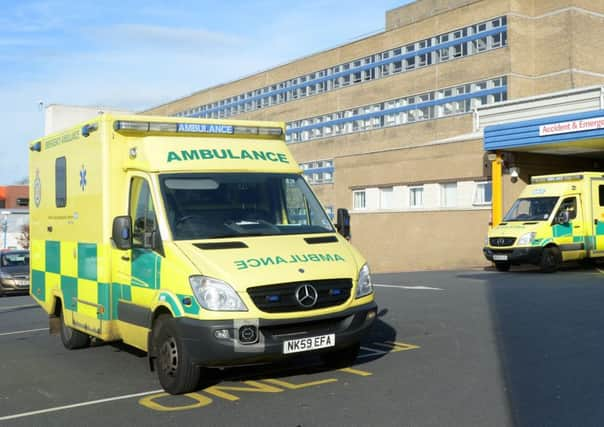‘Patients facing longer waits in A&E due to hospital pressures’


Figures collected by the Royal College of Emergency Medicine (RCEM) over the last seven weeks showed 88 per cent of A&E patients were treated or admitted within four hours – well below the target of 95 per cent.
The A&E target is widely regarded as a key measure of how the NHS is performing and the report found hospitals are also experiencing major problems discharging patients who are medically fit to go home.
Advertisement
Hide AdAdvertisement
Hide AdThe latest concerns come as heath secretary Jeremy Hunt continued talks with junior doctors in a bid to avert strikes planned to begin next Tuesday.
Representatives of the British Medical Association and the Department of Health met for a second day of talks at the Advisory, Conciliation and Arbitration Service (ACAS) with the hope of reaching an agreement over proposed extended working hours to increase weekend cover.
The figures from the RCEM showed, in some places, around a fifth of hospital beds are occupied by patients who cannot leave - so-called bed-blockers - because there is not the right support in the community for them.
Experts say the increasing problems in social care are having a major impact on the NHS. The new figures are based on evidence submitted by more than 40 trusts - one in five of the total in the UK.
Advertisement
Hide AdAdvertisement
Hide AdThe RCEM’s president, Dr Cliff Mann, predicted the “worst is yet to come”. He said: “The majority of hospitals have endeavoured to increase the number of beds available to cope. Despite this, elective operations have had to be cancelled and postponed as bed capacity is insufficient to cope.”
The data shows performance getting worse since hospitals began submitting data at the start of October. Then, just over 92 cent of patients were seen in four hours, falling to 88 per cent in the middle of November.
The Department of Health and NHS England used to publish weekly data for England on A&E performance but have now stopped doing so. Instead, data is published monthly but only covers figures from more than a month ago.
The most recent data published was for September, meaning there is no official published data on how England’s NHS is currently performing on A&E.
Advertisement
Hide AdAdvertisement
Hide AdRegionally, previous figures showed Hull and East Yorkshire Hospitals NHS Trust had one of the worst records in the country and September’s statistics showed only 82.1 per cent of A&E patients were seen within four hours.
In its report, the RCEM said: “The college was approached by a number of trusts/boards following the winter of 2014/15.
“Each highlighted that the greatest challenge to the four-hour standard had been issues of bed availability exacerbated by increased delays in transfers of care. These delays in provision of community and social care rose significantly over the winter months.
Dr Mann said: “Part of the purpose of publishing this report is to galvanise people’s thinking at a relatively early stage in the winter so that we can actually take action now before we get to the traditionally really challenging parts of January and February.”
An NHS England spokeswoman said: “It’s important patients who are well enough to leave hospital can do so at the earliest opportunity and are helped to recover with dignity and compassion.”